#beltaine
Text
May 2024 witch guide
Full moon: May 23rd
New moon: May 7th
Sabbats: Beltane-May1st
May Flower Moon
Known as: Bright Moon, Budding Moon, Dyad Moon, Egg Laying Moon, Frog Moon, Hare Moon, Leaf Budding Moon, Merry Moon, Moon of the Shedding Ponies, Planting Moon, Sproutkale, Thrimilcmonath & Winnemanoth
Element: Fire
Zodiac: Taurus & Gemini
Nature spirits: Elves & Faeries
Deities: Aphrodite, Artemis, Bast, Cernunnos, Diana, Frigga, Flora, Horned God, Kali, Maia, Pan, Priapus & Venus
Animals: Cat, leopard & lynx
Birds: Dove, Swallow & Swan
Trees: Hawthorne & rowan
Herbs: Cinnamon, dittany of Crete, Elder, mint, mugwort & thyme
Flowers: Foxglove, lily of the valley & rose
Scents: Rose & sandalwood
Stones: Amber, Apache tear, carnelian, emerald, garnet, malachite, rose quartz, ruby, tourmaline & tsavorite
Colors: Brown, green, orange, pink & yellow
Energy: Abundance, creative energy, faerie & spirit contact, fertility, intuition, love, marriage, material gains, money, propagation, prosperity, real-estate dealings, relationships & tenacity
May’s Flower Moon name should be no surprise; flowers spring forth across North America in abundance this month!
• “Flower Moon” has been attributed to Algonquin peoples, as confirmed by Christina Ruddy of The Algonquin Way Cultural Centre in Pikwakanagan, Ontario.
May’s Moon was also referred to as the “Month of Flowers” by Jonathan Carver in his 1798 publication, Travels Through the Interior Parts of North America: 1766, 1767, 1768 (pp. 250-252), as a likely Dakota name. Carver stayed with the Naudowessie (Dakota) over a period of time; his expedition covered the Great Lakes region, including the Wisconsin and Minnesota areas.
Beltane
Known as: Beltaine, May day, Roodmas & Cethsamhain
Season: Spring
Symbols: Eggs, faeries, fire, flowers & maypoles
Colors: Blue, dark yellow, green, light pink, orange, red, white yellow & rainbow spectrum
Oils/Incense: Frankincense, lilac, passion flower, rose, tuberose & vanilla
Animals: Bee, cattle, goat & rabbit
Mythical: Faeries
Stones: Bloodstone, emerald, lapis lazuli, orange carnelian, rose quartz & sapphire
Food: Beltane cakes, cherries, dairy foods, farls, green herbal salads, honey, meade, nuts, oat cakes, oats, strawberries & sweets
Herbs/Plants: Almond, ash tree, birch, bramble, cinquefoil, damiana, frankincense, hawthorn, ivy, meadowsweet, mushroom, rosemary, saffron, satyrion root, St.John's wort & woodruff
Flowers: Angelica, bluebell, daisy, hibiscus, honeysuckle, lilac, marigold, primrose, rose, rose hips & yellow cowslips
Trees: Ash, cedar, elder, fir, hawthorn, juniper, linden, mesquite, oak, pine, poplar, rowan & willow
Goddesses: Aphrodite, Areil, Artemis, Cybele, Danu, Diana, Dôn, Eiru, Elen, Eostre, Fand, Flidais, Flora, Freya, Frigga, Maia, Niwalen, Rhea, Rhiannon, Var, Venus & Xochiquetzal
Gods: Baal, Bacchnalia, Balder, Belanos, Belenus, Beli, Beltene, Cernunnos, Cupid, Faunus, Freyr, Grannus, The Green Man, Lares, Lugh, Manawyddan, Odin, Pan, Puck & Taranis
Issues, Intentions & Powers: Agriculture, creativity, fertility, lust, marriage, the otherworld/Underworld, pleasure, psychic ability, purification, sensuality, sex/uality, visions, warmth & youth
Spellwork: Birth, Earth magick, healing, health & pregnancy
Activities:
• Create a daisy chain or floral decorations
• Decorate & dance around a Maypole
• Set up an outdoor altar & leave offerings to faeries
• Prepare a ritual bath with fresh flowers
• Light a bonfire or candles & dance around them
• Set aside time for self care
• Gather flowers & use them to decorate your home or altar
• Prepare a feast to celebrate with friends/family
• Make flower crowns
• Bake bannocks, oat cakes or cookies
• Hang wreaths decorated with ribbons & flowers
• Plant flowers in your garden
• Start a wish book/box/journal
• Go on a walk & gice thanks to nature⁸
• Cast fertility or a bunch spells
• Fill small baskets of flowers & small goodies, then leave them on your friends/neighbors doorstep as a gesture of goodwill & friendship
Beltane is mentioned in the earliest Irish literature and is associated with important events in Irish mythology. Also known as Cétshamhain ('first of summer'), it marked the beginning of summer & was when cattle were driven out to the summer pastures. Rituals were performed to protect cattle, people & crops, and to encourage growth. (Today, Witches who observe the Wheel of the Year celebrate Beltane as the height of Spring.)
Special bonfires were kindled, whose flames, smoke & ashes were deemed to have protective powers. The people and their cattle would walk around or between bonfires & sometimes leap over the flames or embers. All household fires would be doused & then re-lit from the Beltane bonfire.
These gatherings would be accompanied by a feast, and some of the food and drink would be offered to the aos sí. Doors, windows, byres and livestock would be decorated with yellow May flowers, perhaps because they evoked fire.
In parts of Ireland, people would make a May Bush: typically a thorn bush or branch decorated with flowers, ribbons, bright shells & rushlights. Holy wells were also visited, while Beltane dew was thought to bring beauty & maintain youthfulness.
• The aos sí (often referred to as spirits or fairies) were thought to be especially active at Beltane. Like Samhain, which lies directly opposite from Beltane on the Wheel of the Year, this was seen as a time when the veil between worlds was at its thinnest. At Samhain the veil between the worlds of the living & the dead is thin enough that we can connect & convene with our beloved dead, here at Beltane it’s the veil between the human world, and the world of faeries & nature spirits that has grown thin. Offerings would be left at the ancient faerie forts, the wells and in other sacred places in an effort to appease these nature spirits to ensure a successful growing season.
Some believe this is when The Goddess is now the Mother & the God is seen as the Green Man or the wild stag. It celebrates the symbolic union, mating or marriage of the Goddess & God & heralds in the coming summer months. It represents life rather than Samhain on the opposite side of the Wheel of the Year.
Other Celebrations:
• Rosealia- May 23rd
Rosalia or Rosaria was a festival of roses celebrated on various dates, primarily in May, but scattered through mid-July. The observance is sometimes called a rosatio ("rose-adornment") or the dies rosationis, "day of rose-adornment," & could be celebrated also with violets. As a commemoration of the dead, the rosatio developed from the custom of placing flowers at burial sites. It was among the extensive private religious practices by means of which the Romans cared for their dead, reflecting the value placed on tradition (mos maiorum, "the way of the ancestors"), family lineage & memorials ranging from simple inscriptions to grand public works. Several dates on the Roman calendar were set aside as public holidays or memorial days devoted to the dead.
Roses had funerary significance in Greece, but were particularly associated with death & entombment among the Romans. In Greece, roses appear on funerary steles & in epitaphs most often of girls. Flowers were traditional symbols of rejuvenation, rebirth &memory, with the red & purple of roses & violets felt to evoke the color of blood as a form of propitiation
Sources:
Farmersalmanac .com
Llewellyn's Complete Book of Correspondences by Sandra Kines
Wikipedia
A Witch's Book of Correspondences by Viktorija Briggs
Encyclopedia britannica
Llewellyn 2024 magical almanac Practical magic for everyday living
#witch guide#may 2024#flower moon#sabbat#wheel of the year#beltane#beltaine#witchblr#wiccablr#paganblr#witch community#witchcore#witchcraft#witches of tumblr#tumblr witch community#tumblr witches#moon magic#spellbook#grimoire#book of shadows#witch#traditional witchcraft#spellwork#beginner witch#baby witch#witch tips#witch tumblr#baby witch tips#GreenWitchcrafts#witch friends
95 notes
·
View notes
Text
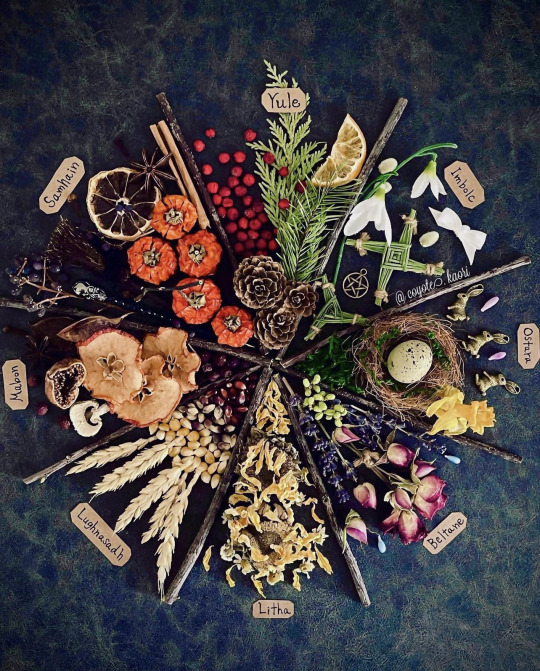
📷 Coyote.kaori
#wheel of the year#Samhain#mabon#imbolc#Ostara#Yule#litha#lammas#lughnassadh#beltaine#witchblr#witches of tumblr#witchcraft#wicca#pagan#witchy things#witchy#magick#green witch#baby witch#kitchen witch#witch altar#wiccan altar
2K notes
·
View notes
Text

(oc) beltaine
1K notes
·
View notes
Text
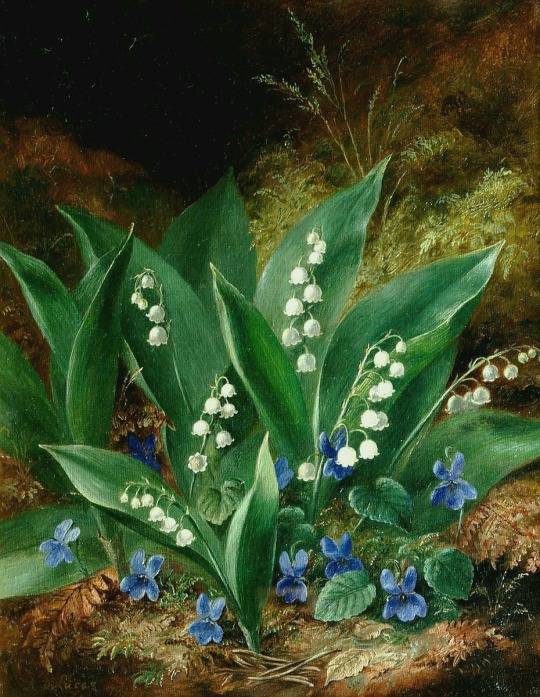
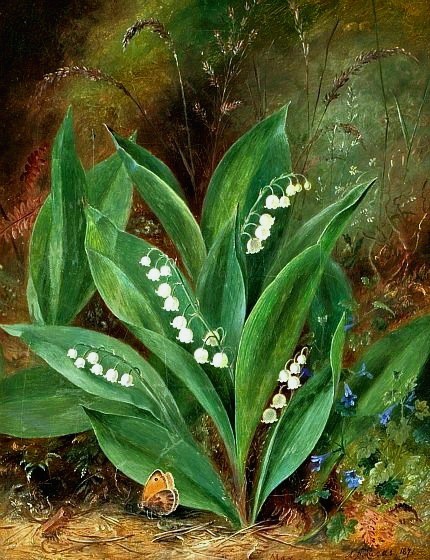
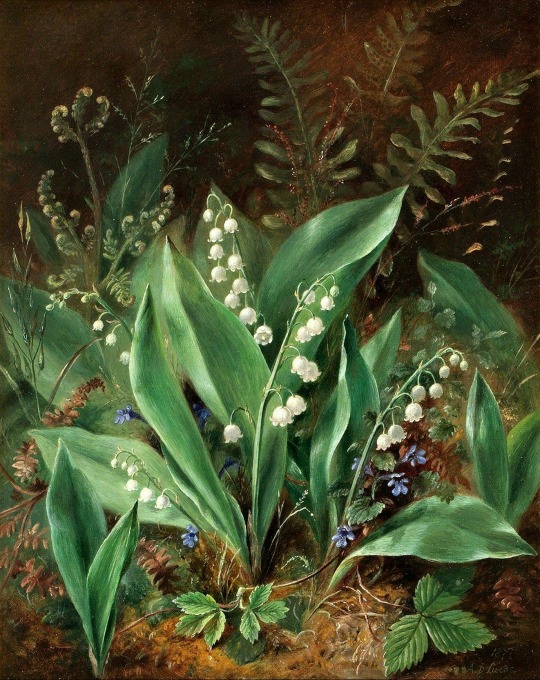
Albert Durer Lucas (British, 1828-1918): Lilies of the Valley
#albert durer lucas#lilies of the valley#violets#nature#spring#beltaine#may day#happy birthday to me
450 notes
·
View notes
Text



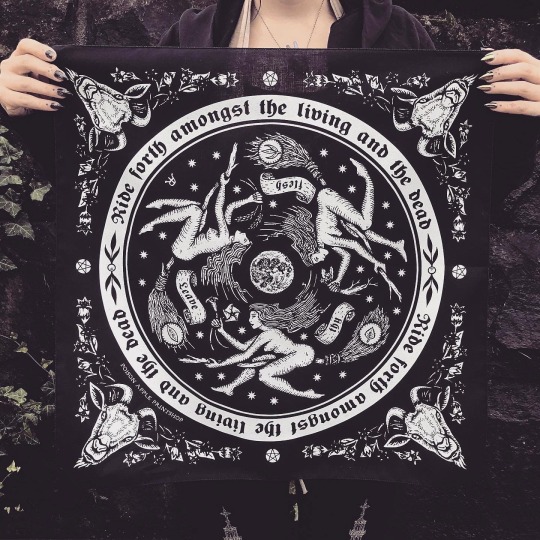
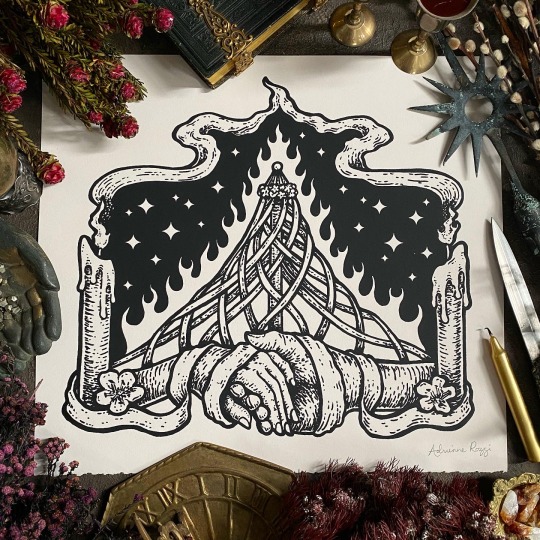



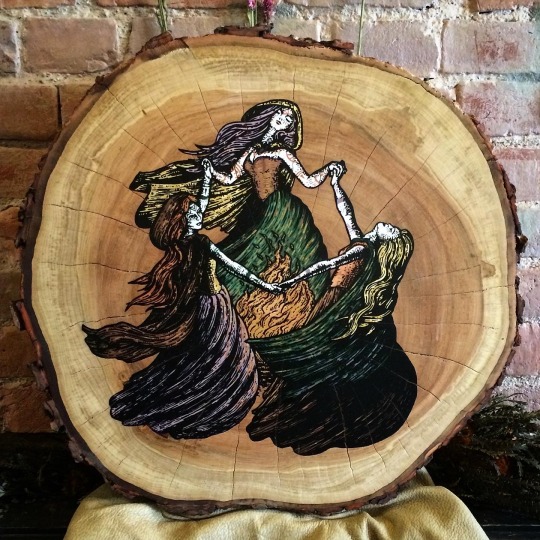
Blessed Beltane!! 🌞
Works I created over the years in honor of Beltane & Witches’ Night. 🔥
Poison Apple Printshop
#poisonappleprintshop#Beltane#witches night#witch’s night#beltaine#artwork#art#witchcraft#paganism#herbalism#Hexennacht#walpurgisnacht#mayday#pagan#witch#sabbat#old timey
284 notes
·
View notes
Text
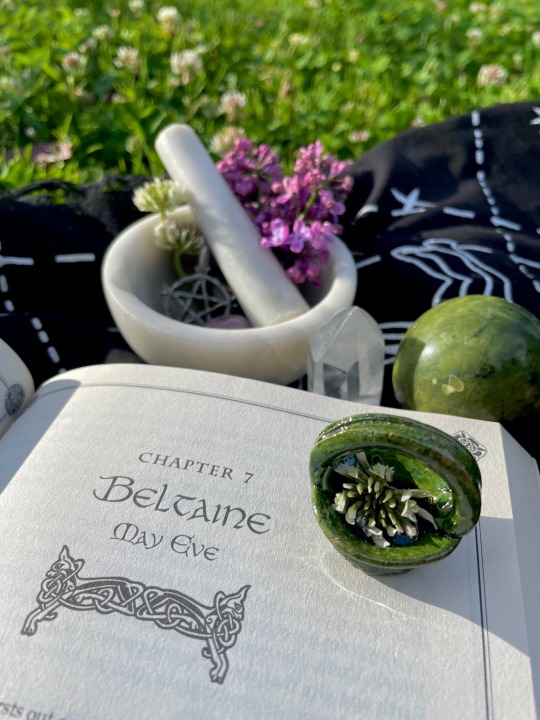
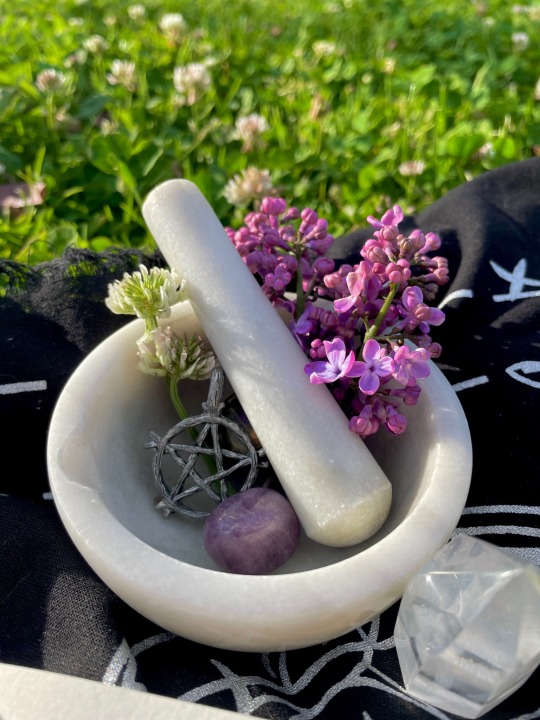
blessed beltane sweet faeries!🌱 ♡ ༄ ✧ ・゚
#honestly obsessed with these photos from my lil' ritual today#i love them#mine#delphisorceress#witchblr#witches of tumblr#earth witch#witch aesthetic#beltane#beltaine#calan mai#may day#lilac#lilacs#clover#clovers#white clovers#faerie#fairy aesthetic#fae aesthetic#fairycore#witchcore
308 notes
·
View notes
Text
Important Facts about Bealtaine from an Irish Celtic Reconstructionist
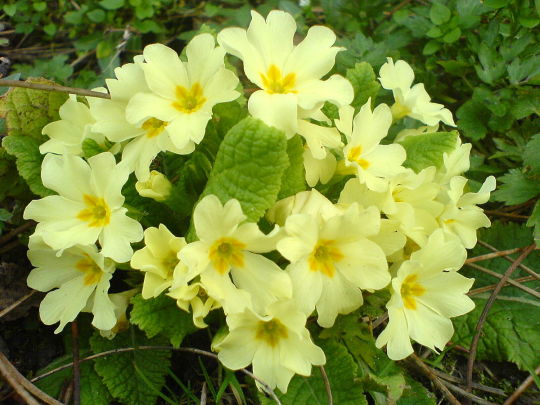

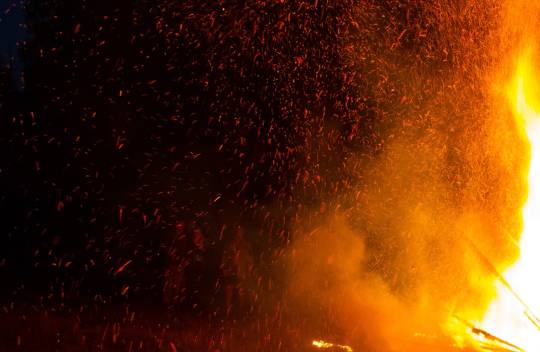
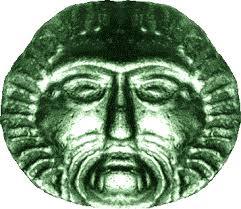
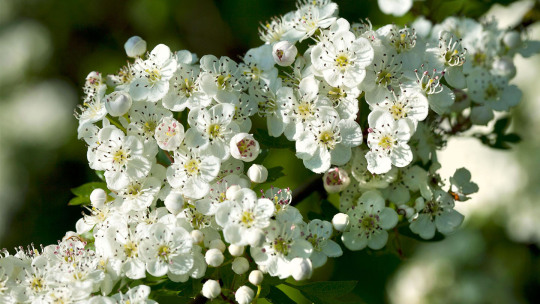
Spelling and Pronunciation
OI. Bealtaine (Bell-tin-Na) has more recently been written as I. Beltaine or Anglicized Beltane (Bell-tain). In the Cormac Glossary it is said to derive from the deity Bel and OI. 'Tene' meaning fire.
Dates
Most Reconstructionists celebrate Bealtaine on April 30th-May 1st, sundown to sundown. Iron age Irish (and other Celts) structured their days from sunset to sunset so while we now track this time as stretching over two days, they would have seen this period as one single day, being the first day of the month of May by the Gregorian calendar. Some Reconsructionists might prefer to celebrate by the Julian calendar which would place this holiday on May 13th-14th (by the Gregorian calendar), still of course from sundown to sundown. In the most traditional sense this holiday would have been celebrated when the livestock was moved from the winter grazing fields out to the summer grazing fields.
Importance in Mythos
Most mythological reference to this holiday comes in the form of the movement of peoples or invasions of peoples.
The mythological invasion of Partholon and his people occurred on Bealtaine and the plague that wiped them out also began on that date and lasted a week. The Tuath De Danann are said to have arrived on the island on Bealtine as well and lastly the Sons of Mil are said to have invaded on this date also (Macalister, 1940).
In later times when Christianity had made its mythologies the way of the land and the old deities were moved to the status of Fae this idea of movement and invasion seems to have persisted. Traditions hold that this date is a dangerous time for mortals as the aes sídhe are moving amongst the daoine sí and may stop by unsuspecting homes to ask for butter or perhaps some water, but if this request is granted they will steal the homes luck for the year.
I will make a note here that while the Cormac Glossary notes the deity Bel there is no Celtic/Gaelic deity of this name (though there is a Mesopotamian one) and this seems to cause a lot of confusion, especially when it comes to Wiccancentic ideas and articles. Cormac was likely referring to the Celtic/Gaelic deity Belenus NOT the Mesopotamian Bel. Belenus/Belenos was associated with the sun and healing and during the Gallo-Roman period was often noted to be the Gaelic Apollo. There is evidence to suggest that Belenus/Belenos was known throughout the Celtic/Gaelic world, though we don't have any specific information about how prominently he was worshiped in Ireland itself it is relatively safe to assume that the Iron age Irish would have known who he was.
Celebration Traditions
Like on Samhain, at the opposing 'end' of the year livestock were transitioned from one grazing area to another. While on Samhain, when the 'dark' half of the year begins and the livestock are moved in from summer grazing to winter grazing, Bealtaine is the opposite. It begins the 'light' half of the year and livestock are moved from the winter grazing out to the summer pastures. At both holidays to ensure healthy animals and protect them from any malicious factors great bonfires were built (most notably on the hill of Uisneach) and livestock would be driven between them.
There seems to be a traditional emphasis on the protection of homes, barns, livestock, peoples, and crops. Generally this seems to be a time when warding against ill luck for the community became a focus. Yellow, specifically yellow flowers (primrose, gorse or hawthorn blossoms), appear to have played a role in this as they have been used to decorate, but when exactly this tradition originated is unknown. The healing wells of Ireland and specifically the dew on the morning of Bealtaine have been thought to be important. Some traditions hold that the dew, when washed with will bring beauty, while others think if drank by the milk cows it would cause them to produce more, but again the origins of these traditions are relatively unknown.
Interesting History to take into Consideration
Given Bealtines long lasting history in Irish mythological tradition of being associated with mass movements of peoples and a need to protect ones family and community in this tumultuous time it is -possible- these ideas persist due to the movements (and possibly famines or plagues) during the "Megadrought" of the Bronze age (1250-1100 BCE). Most studies have focused on the effects of the Mediterranean at this time, but it is reasonable to assume the ripples of effects could have been felt strongly enough in Ireland to leave a lasting impression, especially since it is not outlandish to assume that people fleeing the Mediterranean area, which was no longer able to adequately sustain them, may have fled to the more temperate British Isles and passed on their trauma through oral tradition. This could possibly be backed up by looking at the etymology of 'Bel' not as referencing Beleus/Beleos but as referencing the Irish Balor (or perhaps they are different aspects of the same figure) who embodies not the life sustaining properties of the sun but the deadly and destructive ones. Balor balcbéimnech, 'Balor the strong smiter,' Balor birugerc, ' Balor of the piercing eye,' Balor mae Doit meic Néid, 'Balor son of Dot son of Néit.'
This is obviously only my personal opinion and can be taken or dismissed as one likes.
#celtic mythology#celtic reconstructionism#celtic paganism#celtic reconstructionist#celtic#Irish#irish mythology#irish reconstructionist#irish reconstructionism#irish paganism#beltaine#Bealtaine#Beltane#festival#fire festival#blackcrowing
228 notes
·
View notes
Text
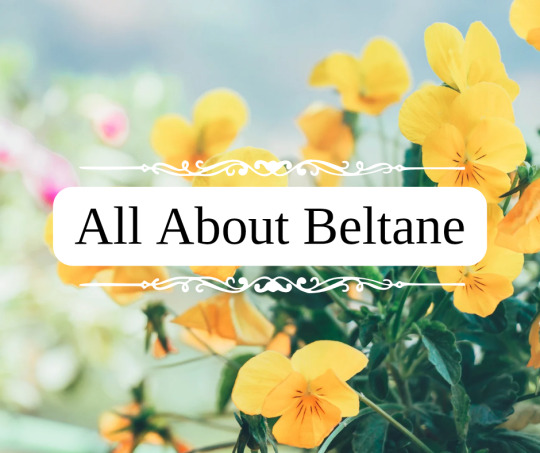
All About Beltane
Beltane, also known as Bealtaine in Irish, is a Gaelic holiday traditionally held on May 1st or the halfway point between the spring equinox and the summer solstice. It is believed to be named after the Celtic sun god Belenus. It was widely observed in Ireland, Scotland, and the Isle Of Man, and is one of the 4 major Celtic fire festivals. It is mentioned in even the earliest Irish literature and marked the beginning of summer and used as the marker to drive cattle into their summer pastures. Although public celebrations have mostly fallen out after the 20th century and many traditions have been mixed with other cultural holidays (such as the Roman holiday May Day), many Celtic Neopagans and Wiccans still celebrate, and many local traditions still continue, causing it to now get a cultural revival.
Traditionally, rituals were held to protect the livestock that moved pastures, along with crops, dairy products, and people, and to encourage growth. It was also important to appease the Aos Sí, or nature spirits/fairies, which were believed to be more active then.
According to early medieval texts in 908, druids would make two bonfires and drive cattle between them to protect them from disease. In the 18th and 19th centuries, bonfires continued to be an important part of the celebrations. Before the bonfires were lit, all hearth fires were put out, and then relit using the fire from the Beltane bonfires after the celebration.
Continuing into the 19th century, cattle were still driven over or between flames, or sometimes around the fires or made to leap over. The people themselves did as well for good luck and protection. Once the fires died down, people would dab themselves with the ashes and sprinkle them over their crops and livestock. Torches from the bonfires would also be brought home and carried around the home or boundaries, and also used to relight the hearth.
Food was also an important part of the Beltane festival, and usually included a feast of lamb, which, historically, was sacrificed. In 1769, it was written that a hot drink, called a caudle, made of eggs, butter, oatmeal, and milk was served, along with tossing a bit on the ground as an offering. A Beltane Bannock, a type of oatmeal cake, was also written to be important and had a few traditions around it.
In one tradition, the Beltane Bannock had nine knobs on it and each person would take the bannock and face the fire, proceeding to break off the knobs of bannock one at a time and tossing them behind their shoulder as an offering to the spirits for protection over their livestock and from predators (one for the cow, one for the sheep, one for the fox, etc). Afterwards, they would drink the caudle.
According to other 18th century writers, there was another Beltane Bannock tradition where the bannock would be cut into slices and one was marked with charcoal. The slices were then thrown into a bonnet and everyone would take one out while blindfolded. According to one writer, whoever pulled the marked bannock slice had to leap through the fire 3 times. According to another, the person would instead be pretend-thrown into the fire and for some time afterward people would talk about the person as if they were dead. This may have always been symbolic, or it may have been a tradition from a time where actual human sacrifice was used. This tradition was also near identical to May Day traditions that occurred in Wales and other parts of Europe, however.
Other traditions including flowers and plants were also observed, especially ones that evoked fire. Documents from the 19th century cite that yellow and white flowers, such as primrose, rowan, hawthorn, gorse, hazel, and marsh marigold was used and placed at doorways and windows. Sometimes they were strewn into garland, and other times they were made into bouquets, made into crosses, or fastened to them. They were also fastened to cows and milking/butter equipment.
Decorating a May Bush or May Bough was also a widespread tradition, and it usually consisted of a small tree or branch (typically hawthorn, rowan, holly, or sycamore) decorated with bright flowers, ribbons, candles, painted shells or egg shells from Easter, and more. In some traditions they also decorated it with gold and silver May Balls, which were hurling balls, that were then either given out to children or gifted to winners of a hurling match. It was also known as the only acceptable time to cut a thorn tree, as they were associated with fairies and may have also been a relic of worshipping tree spirits. It would either be decorated where it grew, or branches hung over windows, doors, roofs, and barns either inside or outside. Traditionally, it was the responsibility of the eldest of the house to decorate it.
The tree was usually left up until May 31st, but in some traditions it would be burned in the festival bonfire after singing and dancing around it. In Dublin and Belfast, May Bushes were brought into town and decorated by the whole neighborhood, with each neighborhood competing for the most beautiful bush. These competitions could also lead to neighborhoods attempting to steal others May Bushes, which eventually led to the May Bush being outlawed in Victorian times.
Appeasing the fairies was also a big part in Beltane celebrations, with many traditions revolving around offerings to the fairies and also warding them off, as there were many fears around them stealing dairy. One protection tradition was to leave 3 black coals under the butter churn. Another was to hang May Boughs on the milk pails. And yet another was to hang cattle tails in the barns. Flowers were also used to decorate the cattle's horns for good luck.
Farmers would also lead a procession around the boundaries of the farm and would "carry with them seeds of grain, implements of husbandry, the first well water, and the herb vervain (or rowan)", stopping at the four cardinal points of direction starting at the east, and performing rituals towards each direction at each stop. These processions were said to bring protection of their farm produce and encourage fertility. Some people also made the sign of the cross using milk on the backside of cattle for good luck.
As for fairy offerings, one tradition was to pour milk or leave food at places associated with the fairies such as "fairy trees". In Ireland, cattle were brought to "fairy forts" where a small amount of their blood was poured into the earth with prayers of the herd's safety. Sometimes, the blood would be left to dry and then be burnt.
Visiting holy wells was also a popular way to celebrate Beltane. Visitors would walk sunwise, moving from east to west, around the well while praying for health. They would then leave offerings of coins or cloth. The first water drawn from the well on Beltane was thought to be especially potent, and would bring good luck to the person who drew it.
Morning dew on Beltane was also thought to bring goodluck and health, and maidens would wash their face with it or roll in it at dawn or before sunrise on Beltane. It was also collected in a jar, left in sunlight, and then filtered. The dew was said to increase sexual attractiveness, maintain youthfulness, protect from sun damage, and ensure skin health during the ensuing year.
Modern day celebrations may vary from these more traditional festival activities, but many choose to incorporate or take inspiration from the traditions at least. Popular traditions still revolve around bonfires, feasts, decorating a May Bush, and focusing on protection and growth.
Beltane Associations
Colors - yellow, white, red, green
Food - lamb, milk and dairy, beef, bannocks, caudle, cakes
Animals - cattle, sheep, other herd animals
Items - primrose, rowan, hawthorn, gorse, hazel, marsh marigold, holly, sycamore, yellow and white flowers, flower garland, greenery, morning dew, dairy products
Crystals - citrine, fire agate, fire opal, carnelian, red and yellow jasper
Other - protection, fertility, good luck, fire, smoke, ash, sun, bonfires, farming
Ways To Celebrate
light a bonfire
jump over or dance around a bonfire
decorate a May Bush or May Bough
craft and hang flower garland
bake Beltane Bannocks
collect morning dew
create some caudle
ward and protect your home or property
leave offerings for the fairies
focus on protection, growth, and luck magic
enjoy time in the sun
have a feast
create a bouquet out of yellow and white flowers
visit a farm or petting zoo
#beltane#beltaine#bealtaine#celtic#gaelic#irish#scottish#pagan#witch#witchy#wicca#may day#magick#magic#magickal#grimoire#tradition#celebrate#bonfire#fire festival#witchcraft#spiritual#witchblr#witch community#paganism#pagan witch#celtic paganism#paganblr#about#dairy
47 notes
·
View notes
Text
Beltane Activities List:
(These are the things I’ll be doing on May 1st, these are simply ideas, obviously adapt them to your craft and belief system)
🌼Buy some fresh yellow flowers
🌼Play my Beltane playlist
🌼Research Fairies
🌼 Go Outside and meditate
🌼Wear Ribbons or flowers in my hair
🌼Light a candle
🌼Put a log on the fireplace
🌼Do some flower picking (With Jörd’s permission)
🌼Eat fresh fruit like strawberries
🌼Dance to music (like my playlist or this YouTube video that I link here) https://youtu.be/JjbV0wvGVDA
youtube
🌼Have my study ambience be the dead of night’s Beltane ambience altar (linked) https://youtu.be/Q18JUCVWOV8
youtube
🌼Take a ritual shower
🌼Do a meditation that is specifically for Beltane
🌼Do divination using a Beltane spread
🌼Display a Beltane vibes Oracle or tarot card on your altar
🌼Be childlike and enjoy everything!
🌼Work with stones like
-Carnelian for enjoyment & creativity
-Citrine for sunshine positivity
-Garnet for love and grounded abundance
-Staurolite for working with the faeries or Alfr as well as lucky attributes
-Unakite for connecting with nature spirits and the energy of spring
🌼Drink lemon water!
🌼Make art inspired by this pagan festival (draw faeries, flowers, bonfires, maypoles, etc)
🌼Have chamomile tea with honey before bed!
That’s it! 🌱🌼🌾🔥
#beltaine#beltane#Beltane ideas#pagan#witchcraft#witch#witchblr#witchy#wiccan sabbat#eclectic pagan#paganism#fire festival#festival#faerie#spirituality#ideas#Youtube#velvetrosewitchery
188 notes
·
View notes
Text
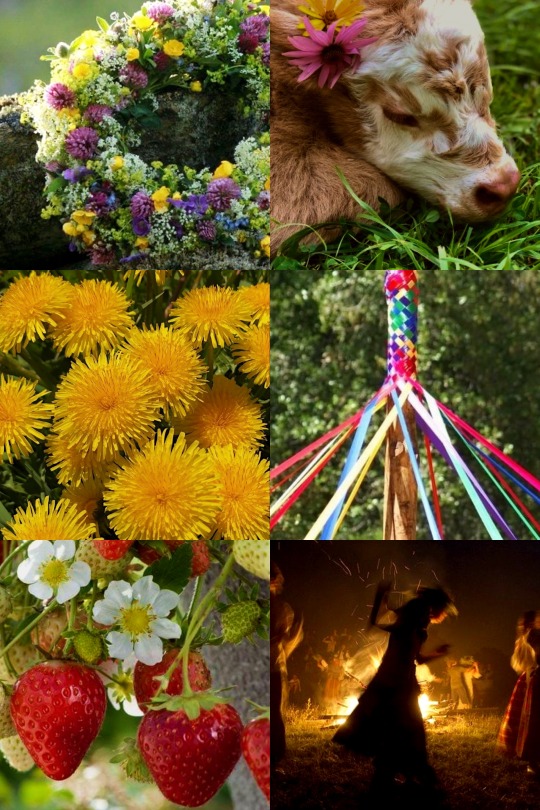
Beltane, 31st April - 1st May, the birth of Summer.
"Spring is strong and virtuous,
Broad-sowing, cheerful, plenteous,
Quickening underneath the mould
Grains beyond the price of gold.
So deep and large her bounties are,
That one broad, long midsummer day
Shall to the planet overpay
The ravage of a year of war.",
from May Day, by Ralph Waldo Emerson.
"Drug the cup, thou bulter sweet,
And send the nectar round;
The feet that slid so long on sleet
Are flad to feel the ground.
Fill and saturate each kind
With good according to his mind,
Fill each kind and saturate
With good agreeing with its fate,
And soft perfection of its plan -
Willow and violet, maiden and man.",
from May Day, by Ralph Waldo Emerson.
19 notes
·
View notes
Text
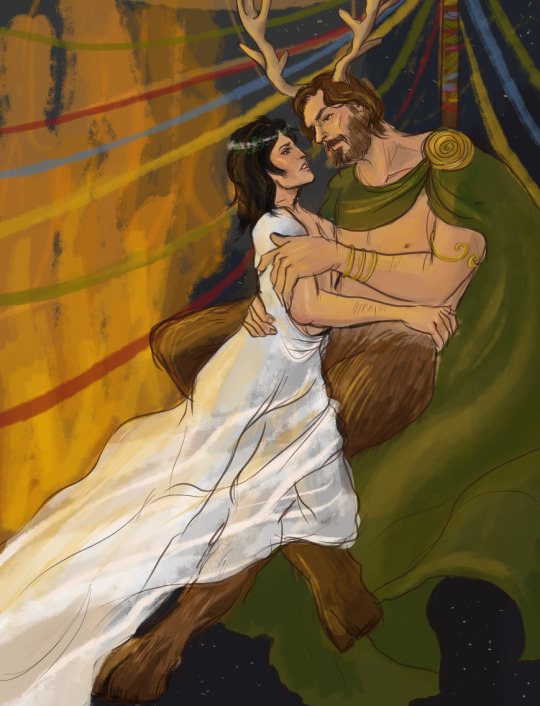
A quick little sketchy and incredibly messy thing I did just for fun for anyone celebrating Walpurgis Night, Beltain, Filippo-Jacob Night, witch burning or whatever on this magical night!
#the mighty boosh#fanart#howince#booshlr art#vince noir#howard moon#noelian#booshlr#art#noel fielding#julian barratt#beltane#beltaine#walpurgis night#walpurgisnacht#folklore#queer#myths#veles#cernunnos#první máj#májka#gay art#boosh fanart#fairy core#traditon#digital fanart#digital painting
119 notes
·
View notes
Text

Coyote.kaori
#witchblr#witches of tumblr#witchcraft#wicca#pagan#witchy things#witchy#magick#green witch#maypole#beltaine#candle magick#witches altar#Wiccan altar#mayday
125 notes
·
View notes
Text



I went to a Medieval Fayre/Beltaine Festival yesterday and had an absolute blast! Of course I dressed up for it because I love an excuse to waltz around in a fun little outfit. Since it consists of most of Mollymauk's attire, I wanted to share some of the pictures with y'all! More to come so stay tuned :D
#artists on tumblr#cosplay#cosplayer#costume#critical role cosplay#crit role#critical role#crc2#mighty nein#the mighty nein#mollymauk cosplay#cr mollymauk#mollymauk#mollymauk tealeaf#beltaine#Medieval fayre#ren faire#renaissance faire#medieval fair
11 notes
·
View notes
Text
what are y’all’s plans for beltane?? my family always has a traditional bonfire and the weather is shaping up to be perfect for it, i’m also looking to do some spirit work to check in on some of the connections i made back during samhain. i’m still looking for some ideas for general housekeep and any spells that might be good for this time of year and i don’t want to be caught with my pants down lol
#my family takes any excuse to do house cleansings and bonfires and this holiday is actually fitting for it lol#beltane#wheel of the year#may day#witchcraft#witchblr#spirit work#dirt.txt#ancestor work#folk witchcraft#spells#spellcraft#spirit communication#holidays#witch blog#witch community#beltaine#beltain#folk magic#paganblr#pagan#paganism#polytheism#polytheist#deity worship#deity work
14 notes
·
View notes
Text
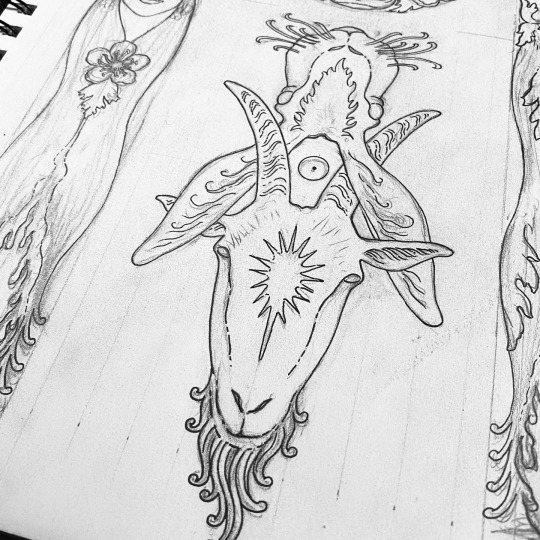

Another drawing in the works that speaks to the fertility and life-force celebrated during Beltane. ✨ Peep that life & death symbolism in the center. ⚰️🌞
Poison Apple Printshop
#poisonappleprintshop#sketchbook#Beltane#beltaine#art#goat#hare#witchcraft#pagan#Rowan Morrison#fertility
204 notes
·
View notes
Text

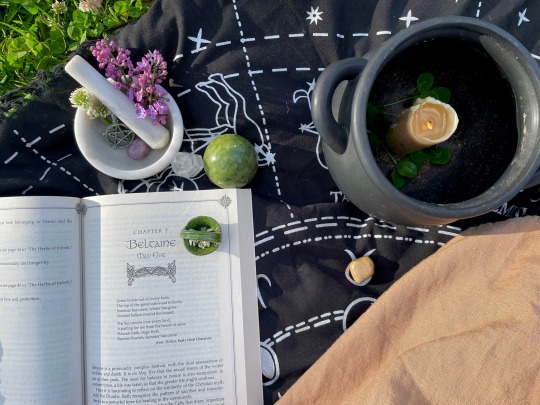
a sweet may day at the lake ♡ 🍃
#blessed beltane!#mine#delphisorceress#witchblr#witches of tumblr#earth witch#witch aesthetic#beltane#beltaine#calan mai#may day#uruz#runes#norse runes#nordic runes#elder futhark#rituals#witchcraft#witchcore#fairycore#nature witch#fairy witch#fae witch#fae
76 notes
·
View notes